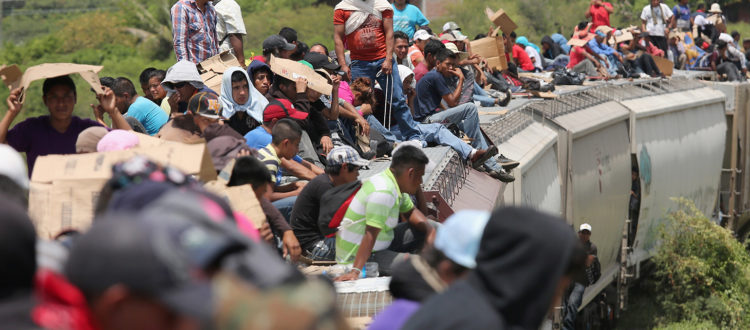Border Patrol statistics show changing migration pattern
Published on November 7th, 2014
Andrew Becker
November 5, 2014
The Washington Post
Most of the people the Border Patrol stopped from sneaking into the country last year were from countries other than Mexico, according to agency statistics, a shift that might have provided fodder for politicians leading up to Tuesday’s election.
But they didn’t get much of a chance. The Border Patrol’s annual statistics were posted on the U.S. Customs and Border Protection Web site for about five hours on Oct. 10, then taken down.
Now some are questioning whether that decision was an example of the Obama administration playing politics with public information.
Even before Tuesday, the administration said it was waiting until after the elections to deal with immigration reform so that any losses would not be blamed on the Democrats’ proposal. For some, removing the apprehension statistics — which both parties could use to criticize U.S. immigration laws — was a political move.
“It worries me that they may have been taken down for purely political reasons,” said Rep. Jason Chaffetz (R-Utah). “If the information is ready, it should be made available.”
But Customs and Border Protection spokesman Christopher O’Neil said in an e-mail that the decision to remove the briefly released data had nothing to do with the midterm elections. Rather, he said, it was an effort to provide all of the agency’s statistics — and not just the Border Patrol’s — “in one concise and comprehensive package.”
He said the agency had intended to publish the data by Oct. 31. But administrative delays in gathering statistics by operational elements caused the date to be pushed back several days. Customs and Border Protection now plans to publish before Nov. 15, he wrote. The early release, he said, was due to miscommunication.
“Someone got ahead of us, and then, someone else gave them to a reporter [without] coordinating with us,” he wrote, adding that in past years, the agency didn’t release statistics until well after January for the previous fiscal year. “No conspiracy, no politics, just good governance.”
The fact that the Border Patrol caught mostly foreign nationals not from Mexico might be an anomaly, but it underscores the border’s changing dynamics. The federal government still faces challenges in understanding who may be trying to enter the country without authorization.
With immigration a long-simmering issue, apprehension data have been leveraged by Democrats and Republicans. Current and former officials speculate that CBP may have wanted to stay out of the political debate as Election Day neared by not highlighting 2014 statistics.
Victor Manjarrez, a retired Border Patrol chief in Tucson, said the numbers can be interpreted — and exploited — in different ways, depending on the political party.
Many Border Patrol chiefs continue to feel “an incredible amount of pressure,” said Manjarrez, now the associate director of the National Center for Border Security and Immigration, a research group at the University of Texas at El Paso. “The fear is timing. If this was next year, it wouldn’t be a big deal.”
Since the 2014 fiscal year ended Sept. 30, bits and pieces of the annual statistics have dribbled out. The data show mixed results for the Obama administration, which has touted its border apprehensions, largely from Mexico, as the lowest level in decades.
Homeland Security Secretary Jeh Johnson spoke about the number of apprehensions on the southwestern border in a speech at a Washington think tank on the state of border security shortly after fiscal 2014 ended.
Using slides to illustrate his remarks at the Center for Strategic and International Studies on Oct. 9, Johnson announced that the Border Patrol had made 479,377 apprehensions last year on the border. He saluted CBP for recently making public an internal report and new policy on the agency’s use of force. And he underscored “a commitment to transparency.”
The new annual statistics were posted and taken down within hours the next day.
The agency has kept posted data relating to the surge of unaccompanied minors from Central America caught at the border, which was a driving factor in the spike in “other than Mexican” apprehensions in 2014.
But the full data set, obtained by the Center for Investigative Reporting, shows a mixed bag. Apprehensions on the border have increased for the past three years. Yet border deaths fell to the lowest level since 1999. A majority of migrants — 252,600, or about 53 percent — caught on the border in 2014 were not Mexican. In contrast, a decade ago, Mexicans accounted for 93 percent of apprehensions, according to government statistics.
Andrew Becker is a reporter for the Center for Investigative Reporting, an independent, nonprofit newsroom based in the San Francisco Bay area.





